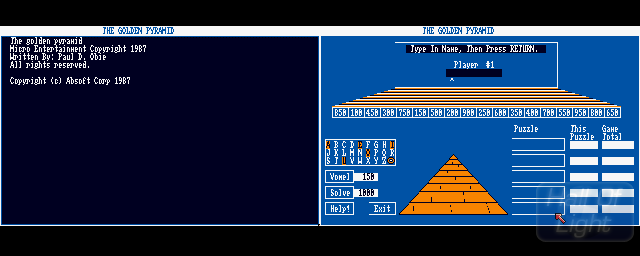Source: PC World – January 1987
If you had a PC (meaning an IBM PC or compatible) or were thinking of getting one in the 1980s or 1990s, then PC World would probably have been a magazine you would have wanted. The January 1987 issue includes:
Getting Started
- PC to PC – A guide to using a modem and terminal software to communicate between PCs.
Community
- PC Users Unite! – A guide to PC user groups.
Review
- Compaq Deskpro 386: Dare to Be Great – At the time, this was probably one of the best computers you could by, though it wasn’t cheap with a starting price of $6499. Compaq was the first major PC maker to use the 386 chip, beating IBM to the punch.
- Fast-Talking Modems – A look at a couple of modems that use proprietary protocols to achieve speeds of 12000bps. They are very expensive though with a cost of up to $2395 and not compatible with other modems above 9600bps.
- Mainframe Copycats – A look at five different terminal programs that emulate VT100 on the PC. These include Persoft SmarTerm 240 Version 1.1, KEA Systems Zstempc-VT100 Version 2.6, Polygon poly-COM/240 Version 1.12, Coefficient Systems Vterm III Version 1.4, and General Micro Systems PC4010 Version 2.0. VT100 emulation would become common across all terminal software.
- PCs Teach the VAX New Tricks – A look at Datability’s Remote Access Vacility which is software that goes beyond basic terminal functions when used to access a VAX system from a PC.
- A Bold New Fact – A look at the AST TurboLaser printer which has the ability to emulate a variety of other printers.
- Alpha/three: Simple, Powerful, Compatible – A review of the Alpha/three DBMS which is compatible with and cheaper (if somewhat slower) than dBASE.
Hands On
- The Tailored Tabloid – Using Microsoft Access scripting to create personalized newspapers.
- 1-2-3 Budget Tune-Up – A look at a 1-2-3 based app for incorporating sales and cost figures into your budget forecasts.
Departments
- David Bunnell – A look at some of the most influential people in the PC World. Some of the names here include John Sculley, Bill Gates, Gary Kildall, Michael Dell, and Trip Hawkins among others.
- Letters – Letters from readers about legal attempts to prevent renting software, tape backup systems, offshore support, The Mist (game from Mindscape), PCs in Czechoslovakia, and more.
- Harry Miler – A look at the evolution of desktop publishing.
- PC World View – Bill Gross talks about HAL (Human Access Language), a English language front end for 1-2-3; results of a survey of PC users; Ashton-Tate seeks to become world’s leading source of software; and more.
- Product Outlook – A look at recent and upcoming products including RapidFile, Wang LapTop, Crosstalk Mark 4, HAL, Ontio 259, and more.
- From the Software Shelf – First impressions of recent software releases including WordPerfect Library, The Norton Commander, Webster’s New World Writer, BitCom, and more.
- From the Hardware Shelf – First impressions of recent hardware releases including the Multitech Accel 900 286 based computer, the Sharp PC-7000 “portable” computer, the Core XT26 (26 MB hard drive), Orchid TurboEGA video accelerator, and more.
- Password: Communicate – A guide to choosing the right 9600bps modem for your application; comparing time and cost on various online services with 300bps vs. 1200bps modems; phone companies having issues with automatic redial; and more.
- The Help Screen – Questions answered about dealing with the lack of an 8-bit communications protocol when sending documents with 8-bit characters, serial port configuration, and recording computer images to a VCR.
- *.* – A BASIC program for generating banners, quicksort routines, and more.
- Kevin Strehlo – Addressing concerns about the IBM PC standard fragmenting.

…and more!










